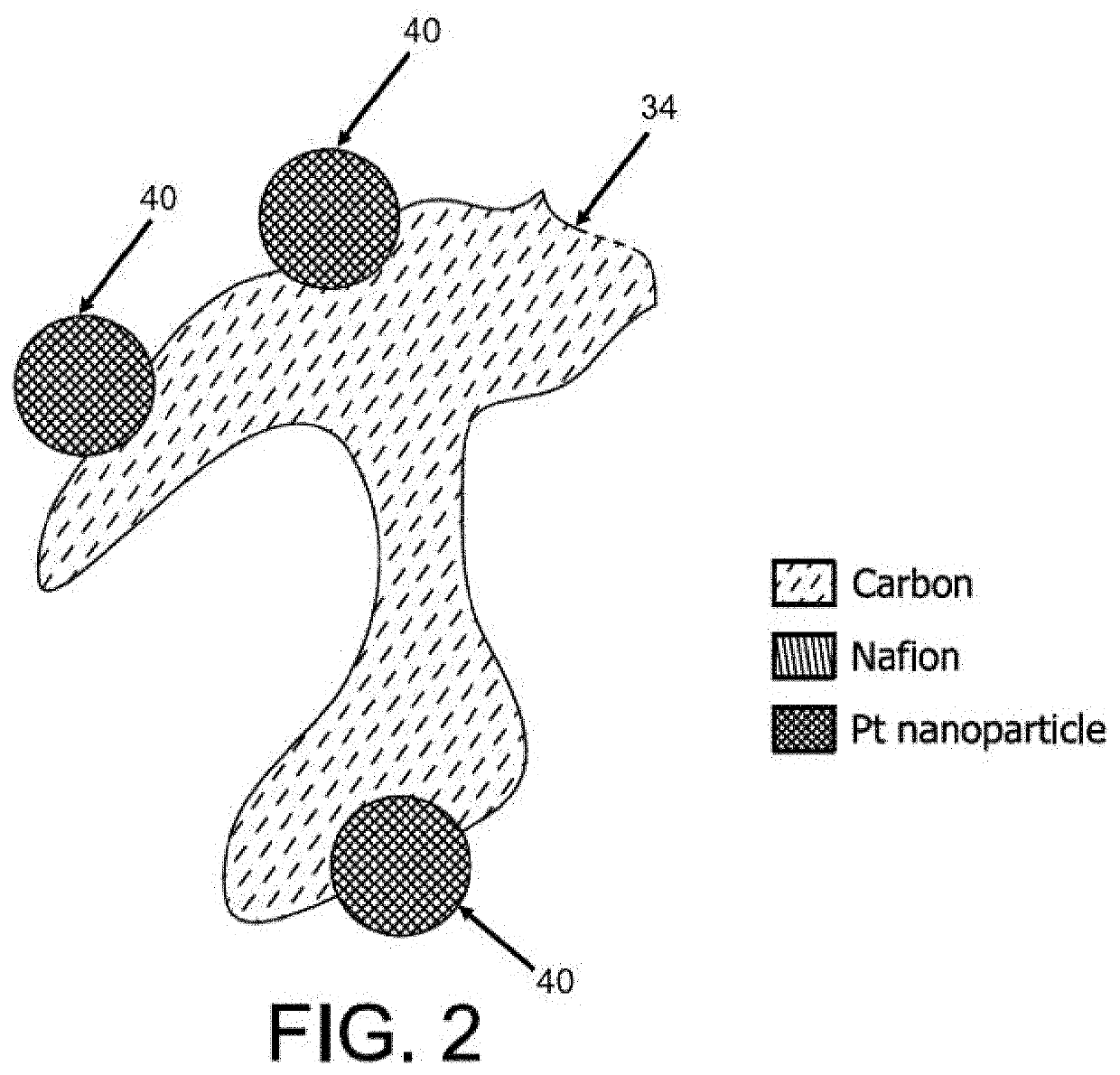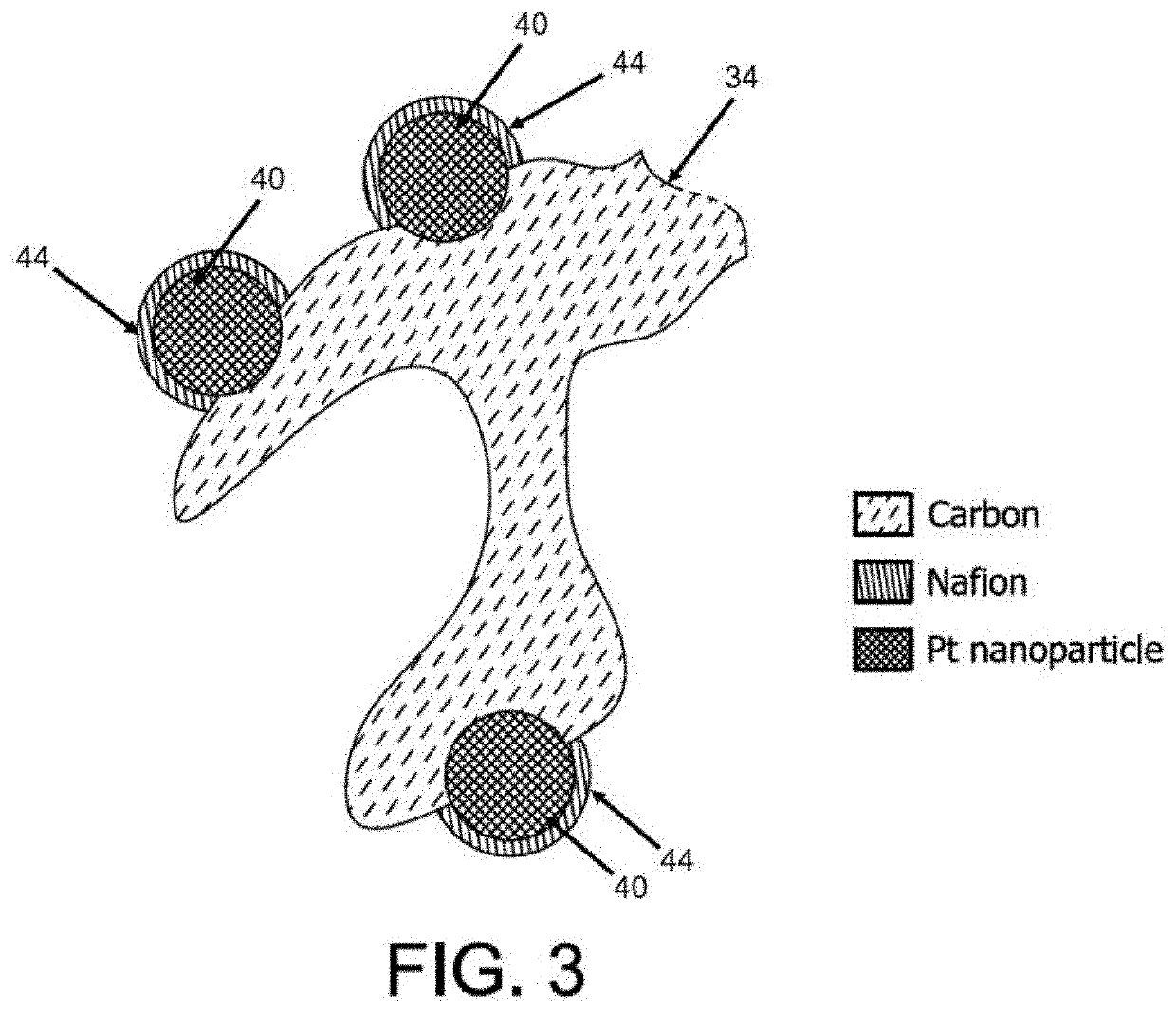Method for making ultralow platinum loading and high durability membrane electrode assembly for polymer electrolyte membrane fuel cells
a fuel cell and membrane electrode technology, applied in the direction of cell components, sustainable manufacturing/processing, final product manufacturing, etc., can solve the problems of high cost, especially the cost of precious metals, and commercialization of polymer electrolyte membrane fuel cells
- Summary
- Abstract
- Description
- Claims
- Application Information
AI Technical Summary
Benefits of technology
Problems solved by technology
Method used
Image
Examples
example
[0050]Multiwall carbon nanotube (MWNT) and carbon nanofibers (CNF) as shown in FIG. 5A were mixed and dispersed in a solution of dimethylformamide (DMF) through vigorous sonication to achieve a homogenous suspension. The DMF also plays as a surface surfactant to promote MWCT and CNF's disaggregation and uniform dispersion.
[0051]The buckypaper was prepared by using the vacuum filtration method through a nylon membrane. After drying, a thin film layer was peeled from the filter membrane to produce a free-standing buckypaper as shown in FIG. 5B. Pt nanoparticles were electrochemically deposited onto the buckypaper by using a base mixture solution of 10 mM H2PtCl6, 0.1 M H2SO4, and 0.5 M ethylene glycol with N2 bubbling and by applying square current pulses. The applied potential increased from 0.2 V to −0.25 V (versus the saturated calomel electrode) with a pulse width of 1 s and a pulse duty cycle of 25%. The pulse was repeated until the desired Pt loading was reached. The Pt loading ...
PUM
| Property | Measurement | Unit |
|---|---|---|
| porosity | aaaaa | aaaaa |
| porosity | aaaaa | aaaaa |
| porosity | aaaaa | aaaaa |
Abstract
Description
Claims
Application Information
 Login to View More
Login to View More - R&D
- Intellectual Property
- Life Sciences
- Materials
- Tech Scout
- Unparalleled Data Quality
- Higher Quality Content
- 60% Fewer Hallucinations
Browse by: Latest US Patents, China's latest patents, Technical Efficacy Thesaurus, Application Domain, Technology Topic, Popular Technical Reports.
© 2025 PatSnap. All rights reserved.Legal|Privacy policy|Modern Slavery Act Transparency Statement|Sitemap|About US| Contact US: help@patsnap.com



